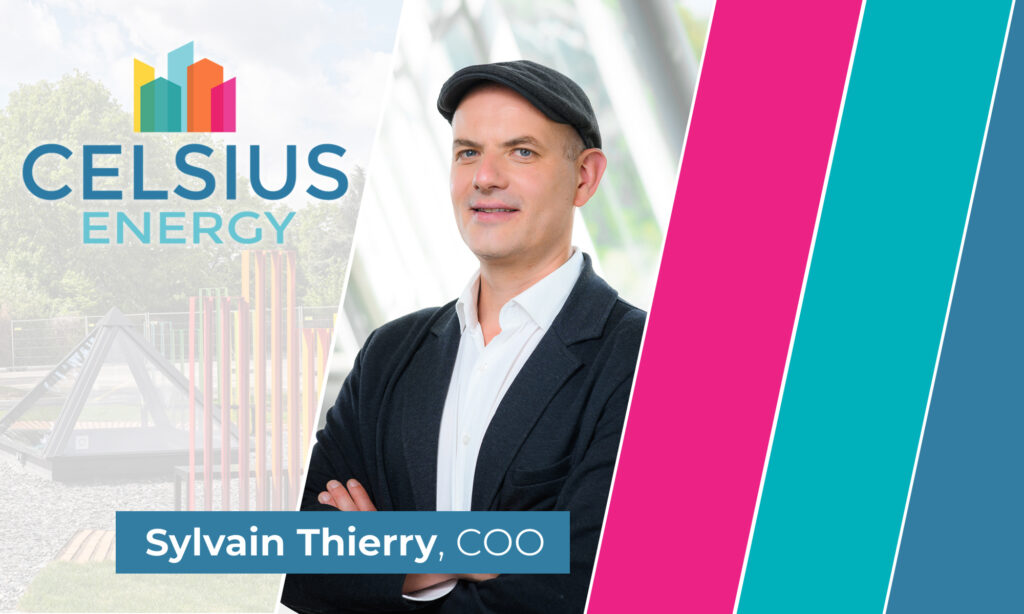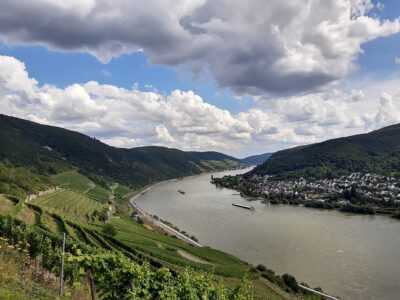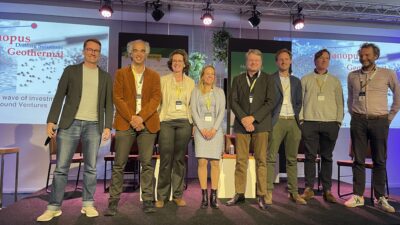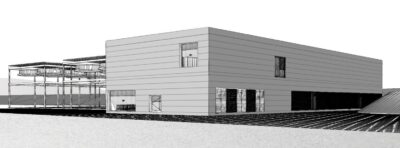Interview – Celsius Energy and decarbonizing buildings using shallow geothermal systems
In this interview, Celsius Energy COO Sylvain Thierry discusses how geothermal systems in buildings can solve a huge chunk of the world's CO2 emissions dilemma.
Heating and cooling buildings accounts for about a third of the final energy consumption globally and 30% of energy-related CO2 emissions. With global temperatures rising, the need for cooling is expected to increase dramatically in the next few years. For these reasons, the building heating and cooling sector is one that urgently needs to be decarbonized.
Celsius Energy aims to contribute to solving this energy dilemma by providing shallow geothermal heating and cooling systems, thus reducing the carbon footprint of buildings. A unique thing about Celsius Energy is that it is a business with its technology developed under SLB, thereby benefiting from the expertise and technologies of the global energy and technology subsurface company.
To learn more about Celsius Energy, we talked to COO and Co-Founder Sylvain Thierry about the huge potential of shallow geothermal and the company’s approach to creating flexible and low-footprint geothermal systems.
Can you tell us a bit about Celsius Energy, the company’s history, and the services that you offer?
My name is Sylvain Thierry and I have spent more than 20 years working for SLB, formerly Schlumberger. Back in 2019, two colleagues and I developed a geoenergy technology that created the Celsius Energy business. The idea was to mobilize our knowledge of subsurface science and technology and apply it to the mission of decarbonizing buildings, which is a huge item in the overall carbon footprint of the world.
We initially considered tapping into deep geothermal for heat, but eventually figured out that shallow geothermal, aka ground source heat pumps, could probably have an even greater impact on decarbonizing heating and cooling.
When we started, the first thing that really struck us was the amount of energy that was used in the form of heat. Everybody talks about electrical power generation from wind, solar, and nuclear sources, but heat is actually about half of what the world needs in terms of energy. Operating buildings alone is responsible for 30% of the total final energy usage of the world. Heating and cooling buildings is 80% of that energy used. In terms of carbon emissions, 27% of the total emissions in the world are due to energy used in buildings (11 Gt CO2 equivalent out of a total of 37 Gt).
This presents a great opportunity for reducing carbon emissions. When we move away from using fossil fuels and use the most efficient system there is—ground source heat pumps—this can reduce carbon emissions by up to 10 times, which is absolutely massive.
So, when we envisioned the creation of Celsius Energy, our goal was to provide end-to-end solutions for decarbonizing buildings. We kicked off the company in 2019 and now we have over 100 people. We are operating in France, the US, and the UK, and have plans to open in more geographies.
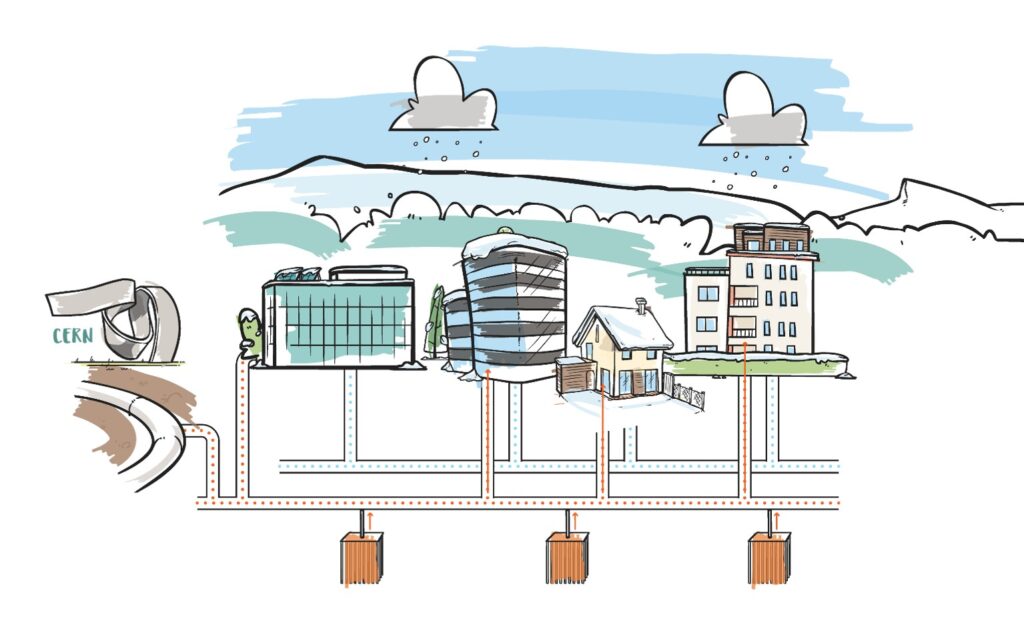
Are your primary clients buildings that are yet to be built? Or can you offer solutions to retrofit heating and cooling systems in existing buildings? How do you typically approach potential clients?
The first thing that we realized is a lot of people think geothermal energy might be an interesting concept, but they do not know how it works. Heat pumps are a bit of a mystery, right? So, we really wanted to have an offer that was end-to-end. By providing the drilling, the heat pump, and the digital management of the whole system, we are able to talk to a building owner and say, we will take care of removing your old gas boiler and chiller, and put our Celsius Energy solution in place and it will be seamless.
We decided not to enter the B2C business of residential homes, but instead focus on collective buildings and large-scale projects. We don’t take 10-kW or smaller projects, but we will take 50-kW up to several MW projects.
One project I can talk to you about in the US is the Framingham project operated by Eversource. We are delivering the underground infrastructure and drilling design, together with our drilling partner. We have a similar, very large-scale project going on in Ferney-Voltaire in France, which is the largest shallow geothermal project in France and one of the top 10 in Europe. Framingham is a “brown field” project in the sense that the shallow geothermal system will be connected to existing homes and collective buildings whereas the Ferney-Voltaire is a “green field” project where the system will serve newly constructed buildings.
As you said, there are two markets for heating and cooling solutions—the new builds, and the retrofits. When we look at these markets, we can see that there are not so many new buildings in Iceland, France, or in the US. Every year, only 1% of the total stock is new build. But every 20 years, in an existing building, you need to change your heating system (typically, your gas boiler or AC chillers). This means that in developed countries, the market size is five times larger in renovation than in new builds. For this reason, we wanted to design a product that would be suitable for retrofitting.
One of the problems with shallow geothermal is that people were drilling traditional vertical bore holes, and that needs a lot of space. In city centers, there is not an open area the size of a football field available in front of every building. This is why we designed a slanted, star-shaped borehole assembly to be able to come close to existing buildings. You just need an area the size of a few parking spots. Then we can drill an area to provide enough energy for heating or to reinject enough energy to the ground for cooling.
To summarize, we focus a lot on renovation. We have delivered a few projects like that in France for hospitals, offices, hotels, and industrial facilities. Most of the time, it was for an existing building that wanted to move to a low-carbon solution.
How many wells can you drill from the same spot? To what depth do you typically drill to? What are other considerations in designing the system?
As I mentioned, the star-shaped drilling approach is a good way to drill several wells with a small footprint. For instance, we have done up to 20 wells from the same spot.
In France, we typically drill down to 200 meters total depth. When you drill slanted, you can have a borehole length of about 230 meters. That takes regulation into consideration, as in France, drilling beyond 200 meters means that you need to apply for a drilling permit. Every geography is unique and has specific subsurface regulations for which we engineer our solution.
One thing that is very important in our system is the Geoenergy Management System or GMS. This is the digital management system that handles the heat supply to the building during various times of the day and in different seasons. This is closely related to the operations of the heat pump and how it relates to the battery on the ground.
The entire system—wells and GMS—needs to be really well designed, and not over-designed. If not, you may end up with a system that is too big for a building, which also makes it more expensive to develop and operate. Those wells are going to last around 50 to 100 years, so you also want to manage the resource under the ground and make sure that the thermal resource is sustainable. This requires a lot of good modeling. To do this, we have built and experimentally proven an instrumented demonstrator on our campus near Paris which has been in operation for the last three years.
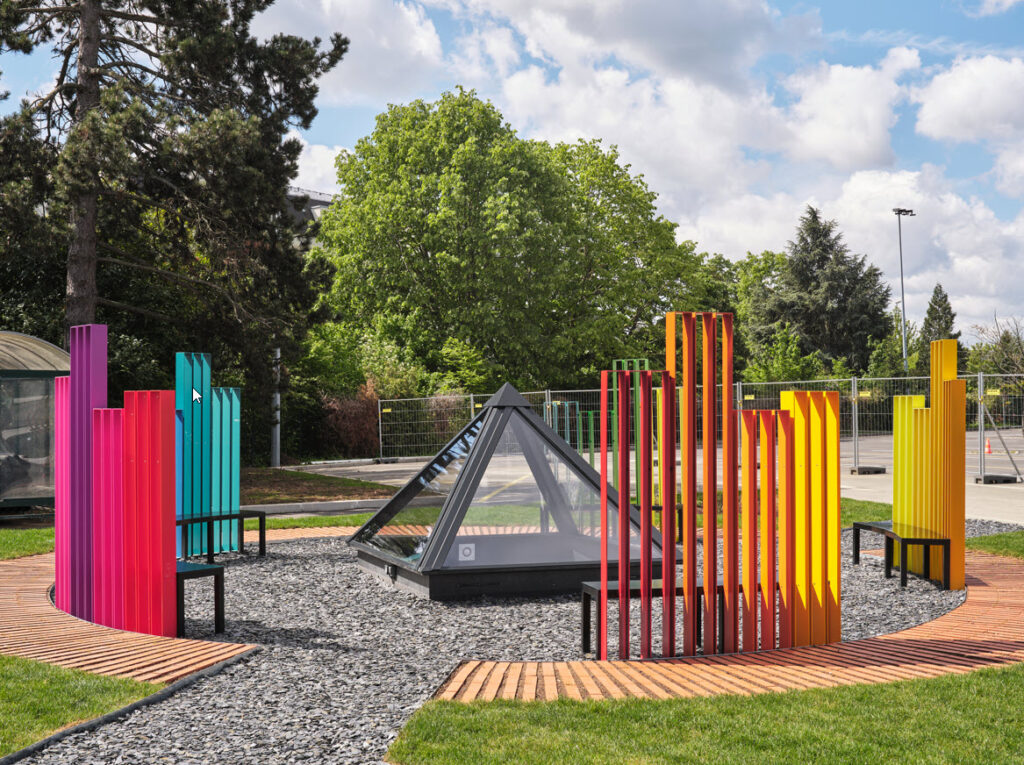
One problem that other geothermal developers encounter, even for shallow geothermal, is the very high upfront capital needed to establish a geothermal system. What has been your approach to address this challenge?
First, one should know that shallow geothermal systems with ground source heat pumps are the cheapest sources of energy in the long run. If you estimate the costs over 10 years, there is no competing technology in terms of operating costs and total cost of ownership. But you are correct—installing them is a large upfront investment.
The number one answer to reduce this cost is, as I said, to design the system correctly. In the past, there used to be drillers, heat pump specialists, designers of facilities underground, and designers of facilities on the surface. And everybody was designing with safety margins, often leading to oversized/overly expensive systems. There are examples of systems that have been vastly oversized. I know of some campuses that realized they could operate with a quarter of the total number of wells that were drilled. In short, that means that the system was four times too expensive for the actual service. You need to be accurate in the design of the system and for that you need to invest in end-to-end modeling capabilities, linking the building heating and cooling demand, the heat pump technical room, the underground borehole heat exchanger, and the management of the whole with a good digital energy management system.
We also invest heavily in R&D and innovation on every front, including drilling. We come from SLB, a company that for nearly 100 years has been developing underground technologies related to drilling. Being an active participant in the development of these technologies has been a great advantage to accelerate our technology and business. Today, we have a lot of drilling-related innovations that have helped improve our drilling efficiency, which has been fundamental in reducing the cost of our services.
And finally, in this market there are different business models. You can offer it as a design, build, and transfer, and then the client has to cover the system operating costs, or you can own and operate. We chose not to own and operate ourselves. But we chose to form partnerships with energy operators and allow them to own and operate the system, often offering financing solutions so that the upfront cost is levelled out over the contract period.
A good example of this is in the Framingham project. We are working on this project with Eversource, a utility in the Northeast US. Eversource will own and operate the geothermal system, while we provide design and build assistance for RH White.
Would you say that the real estate market has evolved in terms of being more open to low-carbon solution? Has it been easier to market your services in recent years?
Absolutely, no doubt. It has been fundamental in Europe for many years, and now in the US, there are regulations that make people look at the carbon footprint of buildings. If you heat a building with oil or gas, you will have a huge carbon footprint that in many places is no longer allowed by law. You don’t get a permit to build, and you don’t even get a permit to rent if the building’s carbon footprint is too high. Some countries in Europe have put plans to ban/phase out fossil fuel burners in place. At this stage, fossil fuel burners still deliver 80% of the total building heating energy demand, but this is changing extremely quickly. Electric heat pumps will be providing the lion’s share of heating in the future.
Now, people are looking at alternatives that are efficient in terms of carbon emissions and have low operating costs. In the context of Europe and the Ukraine war, unstable gas and electricity prices have made the business case for an efficient system like a ground source heat pump much stronger.
Ground source heat pumps are already a USD 30 billion market worldwide, yet the market grew by 17% year-on-year in Europe from 2021 to 2022 and 20% in the US. I see that there is very, very good momentum for ground source heat pumps, especially in collective/large-scale installations where the economics are very attractive.
How has the experience been building a startup? And in your unique case, doing it under a company like SLB?
It’s been a fun ride. I’m a bit of a veteran in SLB with 20 years or so of experience, mostly in subsurface technology development. When we first had this geothermal concept, we invested a lot of personal time and effort to fully understand it from a technical perspective, and spent a lot of time understanding the business fundamentals, customer voice and the market. In the beginning, we did that on top of our day jobs, as a lot of startup entrepreneurs do, which was challenging. Then, we were able to find a sponsor in the company, that supported our idea. They placed us in a start-up incubator program and we worked full time on the creation of this new technology and business. At SLB, there has always been a passion for technology and innovation at every level in the organization.
Last year, SLB made huge changes by changing its name, logo, and really taking at its core the mission to drive energy innovation for a balanced planet. Celsius Energy is part of the company’s New Energy division, that explores tech-led business opportunities in the sectors of: geothermal, (including the leading consulting services in geothermal, GeothermEx), carbon capture and sequestration, critical minerals-lithium, low-carbon hydrogen, and stationary energy storage.
Another huge benefit is the global footprint of SLB. SLB is present in more than 100 countries worldwide, which provides a great platform for scaling up business internationally.
Celsius Energy carries the DNA of technology innovation, the high HSE standards, and service-oriented culture of SLB. When we install our shallow geothermal systems, whether in a factory or building space where people are living or working, the drilling and construction activities can cause disturbance. We go out of our way to mitigate these disturbances to help keep the occupants and client happy. This tech-led, safety and service minded attitude is something that is ingrained in our culture and that makes us different in the building/construction world.
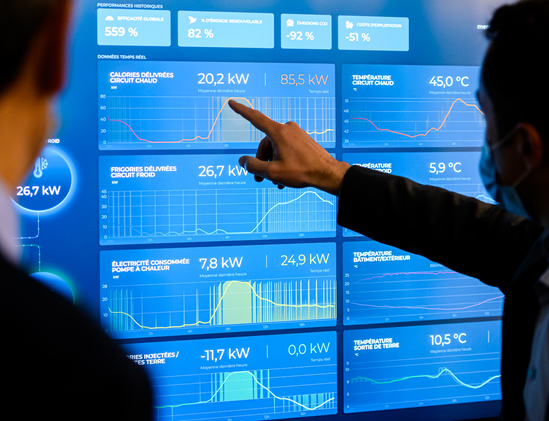
What is next for Celsius Energy? Are there plans to expand to new territories or other markets?
The challenge now is scaling. How do we scale up by extending into new geographies? First, we need to identify the geographies with the right conditions for expansion, and we are seriously looking into a few geographies that we think are relevant markets for us to enter.
Another dimension of scaling applies to projects. We decided to focus on collective buildings or mid-sized buildings, university campuses, new city areas, greenfield developments, and district heating, so we can scale up via project sizes.
That goes hand in hand with the fact that with climate change, consumers will probably need the same amount of heat, but will need more and more cooling. The beauty of shallow geothermal systems with ground source heat pumps is that they work best when you do both heating and cooling. For instance, in the south of France, we get quite a lot of very large-scale projects where we can provide city-level heating and cooling.
What excites you about the geothermal market nowadays? What do you think will the geothermal market look like in 10 years?
The first thing that excites me is that, as an engineer, I think we have on hand a piece of technology that is super-efficient at decarbonizing. It’s proven, and it’s a fact that we can divide by 10 the carbon emissions from something that is massive in the world. That is probably what wakes me up in the morning and gives me energy at work.
Number two is innovation. Even though heat pumps were invented some 200 years ago, there is so much investment to create new, exciting technology for heat pumps and for drilling, that the pace at which that technology is progressing is actually cool.
I think it’s the right moment to try to establish the policies and regulation, and make people realize that heat is so important to decarbonize at this stage. It’s possible to do it, we have the technology, so it’s just a matter of making it happen.
